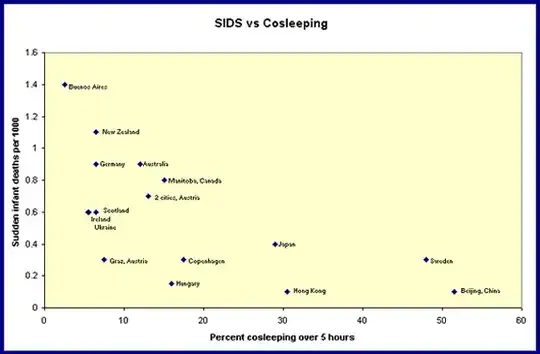Among some circles, co-sleeping is highly advocated for newborns/infants due to ease of breastfeeding and potential developmental bonding to the mother (for more examples, read about proposed advantages here). The immediate and obvious red flag that came to mind was rolling over one's baby. A defense I've heard is that you... just won't:
[In response to inquiry about the safety of co-sleeping] You won't squash him. You couldn't even comfortably roll onto a teddy bear in your sleep, let alone your own baby that your subconscious is ALWAYS aware of. (source)
you wont roll onto your baby. there is no way you forget they are there even when you're dead to the world. (source)
Physically and psychologically it is HIGHLY unlikely that you will roll over onto your baby when co-sleeping. It’s an evolutionary, parental instinct sorta thing (don’t remember the exact name for this but definitely learned about it in my psych classes). Essentially as a parent your conscious and unconscious self is aware that protecting your baby is a priority and you won’t smush or smother them. (source)
However, according to the Consumer Product Safety Commission, via Kid's Health:
According to the CPSC, at least 515 deaths were linked to infants and toddlers under 2 years of age sleeping in adult beds from January 1990 to December 1997:
- 121 of the deaths were attributed to a parent, caregiver, or sibling rolling on top of or against a baby while sleeping
- more than 75% of the deaths involved infants younger than 3 months old
Here's another pro-co-sleeping advocate (emphasis mine):
At the University of Notre Dame's Mother-Baby Behavioral Sleep Laboratory, our studies of breastfeeding mothers who sleep with their 2- to 4-month-olds reveal that both mothers and their babies are extremely sensitive throughout the night to each other's shifting position in the bed.
During my many years of studying sleep-sharing, I've never heard of a single instance in which, under safe conditions, it was proven that a mother suffocated her child. Notice that I said safe conditions: Babies can and do accidentally suffocate when one or both parents doesn't know a baby is in the bed, is drunk or desensitized by drugs, or is indifferent to the baby's presence.
So, to follow in the vein of the last bit:
Is co-sleeping safe when parents are aware of the baby's presence, are not under the influence of substances, and are not indifferent to the baby's presence?1
In layman's terms: is co-sleeping safe under normal conditions?
1 Is that criterion last just a catch-all no true Scotsman variant? If the first two conditions aren't true then the parents must have been indifferent at some level?
